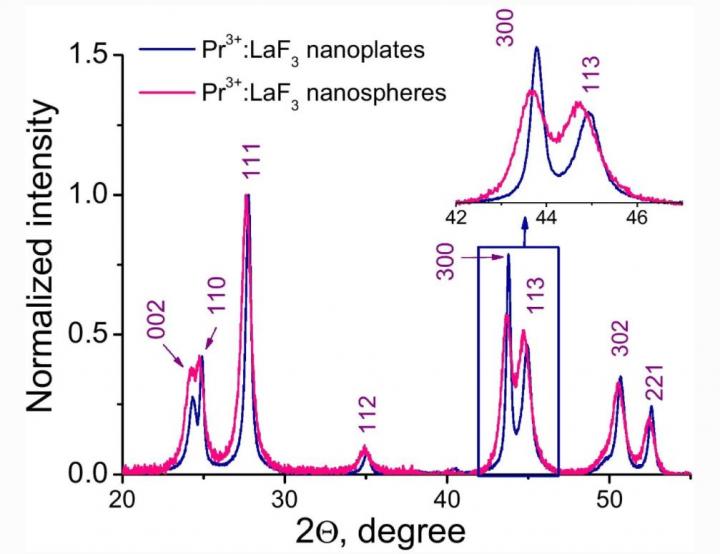A paper by Kazan Federal University was published in Journal of Nanoparticle Research

Credit: Kazan Federal University
The article represents the transmission electron microscopy (TEM) and flow cytometry study of A-549 (human lung carcinoma) cellular uptake of Pr3+:LaF3 nanoparticles. The Pr3+:LaF3 nanoparticles are promising platforms for cell nano-sensors.
The objective of the work was to study the influence of nanoparticle morphology (nanoplates and nanospheres) on cytotoxicity and the dynamic of cellular uptake.
In the flow cytometry method, the cells go through a small tube (as a flow) and are irradiated by a laser. Cells scatter the laser light, and this scattering efficiency can give new information about some processes inside the cell. TEM method allows visualizing the cells with 0.2 nm (10-9 m) spatial resolution.
Both nanoplates and nanospheres are easily internalized by A-549 cells via macropinocytosis after 2, 10, and 24 hours of nanoparticle exposure. The nanoparticles were not observed in cell nuclei and other organelles. During macropinocytosis, relatively large vesicles (0.2-5 μm) are formed. The flow cytometry experiments revealed that the internalized nanoparticles increase the cells’ optical inhomogeneity, which leads to an increase of side scattered light intensity by ~10% without any dynamic during 24 hours (for both morphotypes of nanoparticles). Probably, it can be explained by the fact that macropinocytosis is a dynamic process and some macropinosomes appear and move in the cytoplasm; in turn, other macropinosomes travel back to the cell surface of the membrane and release the content to the extracellular space; consequently, the equilibrium is achieved.
Finally, nanoplates and nanospheres have low tocixity and are easily internalized by cells. These facts pave the way toward creating nano-sensors for cells.
The luminescence of Pr3+:LaF3 nanoparticles (spectral shape) depends on the temperature in the physiological temperature range (20 to 60ºC). This fact, as well as nanosized dimensionality of Pr3+:LaF3 pave the way toward temperature sensing at cell level with spatial resolution less than one micrometer. Such temperature sensors are important in fundamental biology and pharmaceuticals. These sensors allow studying thermodynamic cell responses on external factors (drugs and physical conditions). This information is very important for pre-clinical studies of drugs.
For further development of the research, the authors plan to provide the targeted orientation of the nanoparticles to a specific cell organelle. This property can be achieved by creating a special bio-compatible shell around the Pr3+:LaF3 nanoparticle. This shell should contain special organic molecules which provide attachment to the specific cell organelle. There is also a plan to obtain a temperature map of the whole cell in the microscope.
###
Media Contact
Yury Nurmeev
[email protected]
Original Source
https:/
Related Journal Article
http://dx.




